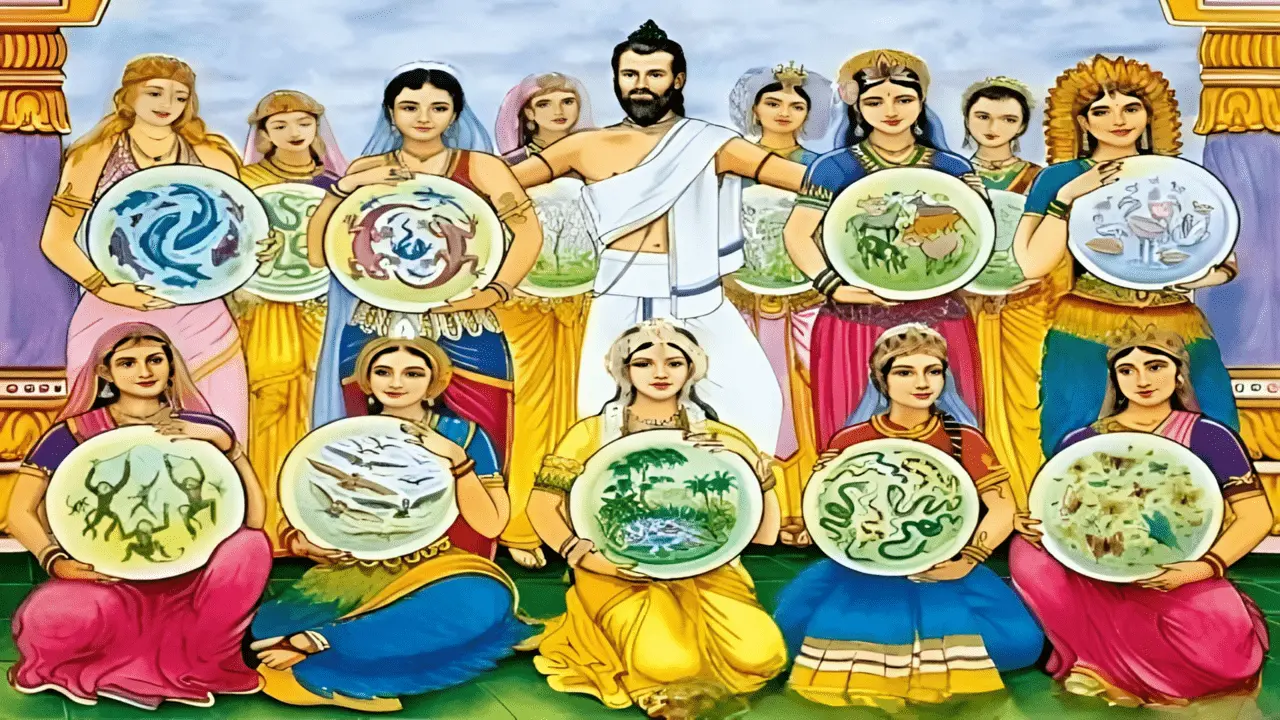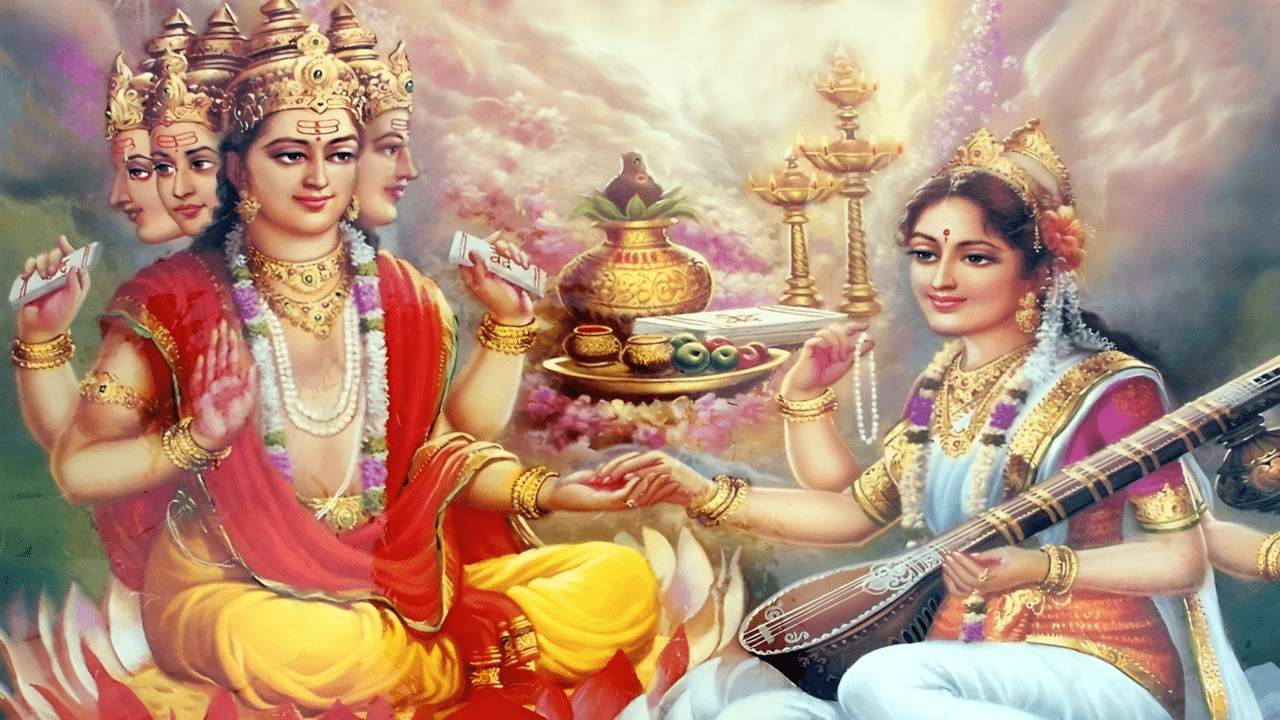In Hindu beliefs, the lineage of divine beings is as intricate as it is fascinating. Among the myriad deities and celestial entities, one figure stands out for his pivotal role in shaping the cosmos: Kashyapa. Often revered as the progenitor of all creatures, Kashyapa’s story intertwines with that of Brahma, the creator god, and his thirteen wives, each representing different aspects of existence.
Kashyapa’s journey unfolds through a series of sacred unions with thirteen wives, each representing different facets of nature and creation. These marriages, arranged by Daksha Prajapati, further illustrate Kashyapa’s role as the progenitor of diverse life forms, contributing to the intricate web of existence.
Daksha, the father of Kashyapa’s wives, played a pivotal role in orchestrating these unions. The celestial nuptials were not merely about personal companionship but held cosmic significance, aligning with the divine plan for populating the universe with a myriad of beings.
Kashyapa’s wives, numbering 13 in total, played a vital role in the proliferation of life across the cosmos. Each wife bore unique characteristics, and their union with Kashyapa resulted in the birth of various celestial entities, demons, and divine beings.
Kashyapa’s union with Aditi, often considered his first wife, resulted in the birth of the Adityas. Aditi is celebrated as the mother of gods, and the Adityas are a group of divine beings associated with the sun. Among them are prominent deities such as Surya, Indra, Varuna, Agni, and others, symbolizing cosmic principles and celestial order.
The marriage of Kashyapa and Diti produced the Daityas, a race of powerful demons. This lineage includes formidable figures like Hiranyaksha and Hiranyakashipu, who play pivotal roles in various Hindu epics. The Daityas represent opposing forces to the Devas, embodying chaos and challenges to cosmic harmony.
Kashyapa’s union with Danu gave rise to the Danavas, another group of formidable demons with strong and large physicals. These beings, including Vritra and Namuchi, are often depicted as adversaries of the Devas in epic battles, symbolizing the eternal cosmic struggle between good and evil.
Vinata, one of Kashyapa’s wives, is the mother of Garuda and Aruna. Garuda, a legendary bird, serves as the mount of Lord Vishnu, while Aruna is the charioteer of Surya, the sun god.
Arishta, Kashyapa’s wife, gave birth to the Gandharvas, celestial musicians and artists. These beings contribute to the aesthetic harmony of the cosmos, and their presence is often associated with beauty and creativity.
Krodhavasha, known for her irascible nature, was one of Kashyapa’s wives. Her name translates to “anger.” She is said to have given birth to a variety of creatures representing different emotional states.
Titmi, another wife of Kashyapa, is associated with aquatic life. Her offspring represent diverse aquatic creatures, showcasing the richness of marine life and its integral role in the cosmic order.
Surabhi, the mother of gentle animals with hooves like cows, highlights the importance of domesticated animals in human life. Cows are revered in Hinduism as symbols of nourishment, abundance, and non-violence.
Sarama, Kashyapa’s wife, is the mother of wild animals with paws. This includes creatures like lion, tiger and wolves, playing roles in various mythological narratives as loyal companions and guardians.
Surasa, associated with the seas, is the mother of sea monsters. These mythical beings represent the vastness and mysteries of the ocean, showcasing the diversity of life beneath the waves.
Ira, Kashyapa’s wife, is linked to the plant kingdom. Her children symbolize the various plants and vegetation that contribute to the balance and sustenance of the natural world.
The mythological tales of Kashyapa and his thirteen wives offer a rich tapestry of cosmic creation, with each wife and their offspring contributing to the diversity and balance of the universe. These narratives not only provide insights into the Hindu understanding of the natural world but also offer allegorical lessons about the interplay of cosmic forces and the eternal struggle between order and chaos. As we explore these mythological stories, we gain a deeper appreciation for the intricate web of life and the divine forces that shape our world.



